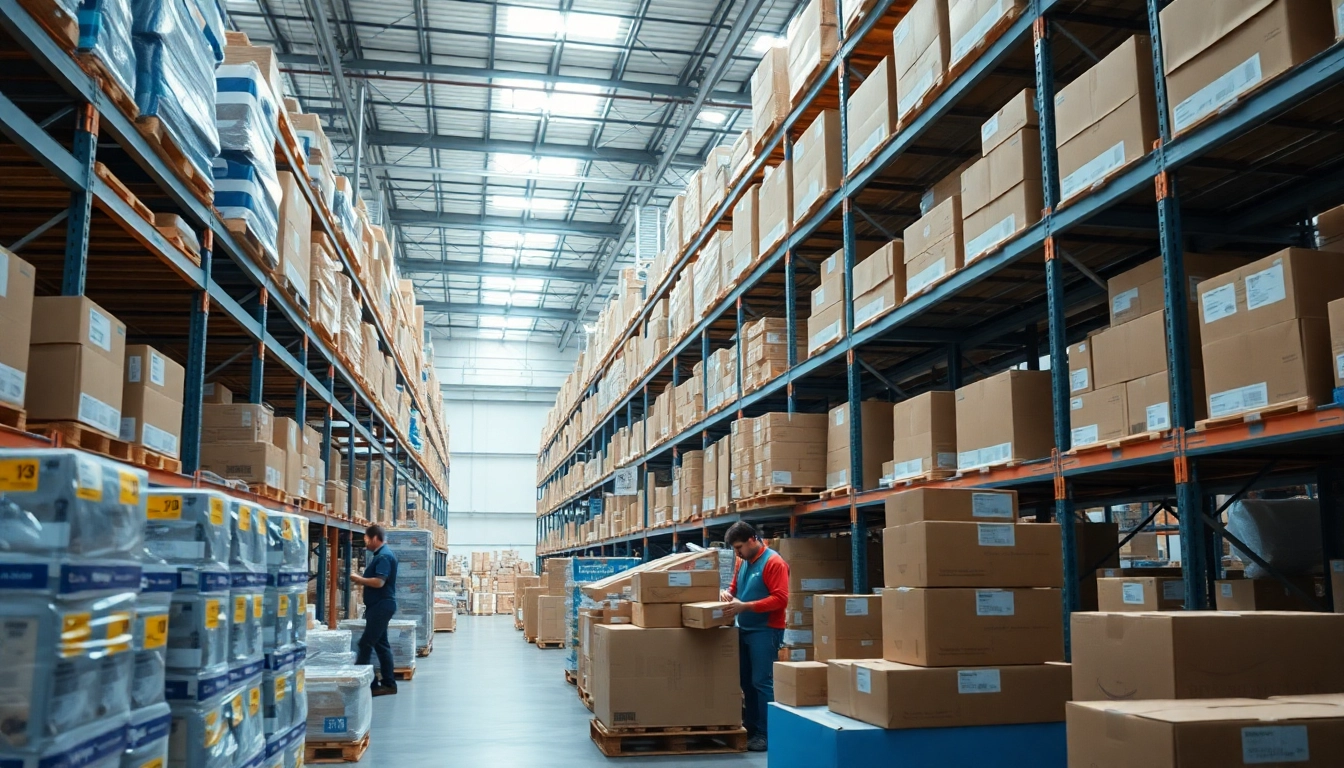Understanding FBA Wholesale Basics
Fulfillment by Amazon (FBA) has revolutionized the way sellers manage their inventory and order fulfillment. Among various models of e-commerce, fba wholesale stands out due to its scalability and potential for significant profit margins. This guide delves deep into the essentials of FBA wholesale, providing a solid foundation for aspiring entrepreneurs.
What is FBA Wholesale?
FBA wholesale refers to the process of purchasing products in bulk from a supplier and selling them on Amazon using the FBA service. This model allows sellers to store their inventory in Amazon’s warehouses, enabling the elimination of logistical headaches associated with shipping and customer service. Once an order is placed, Amazon takes care of packaging, shipping, and handling returns, thus allowing sellers to focus on marketing and scaling their business.
Key Benefits of FBA Wholesale
The FBA wholesale model offers several advantages:
- Increased Scalability: Sellers can manage a larger inventory without the physical constraints of a traditional warehouse.
- Leverage Amazon’s Infrastructure: With access to Amazon’s extensive logistics and customer service, sellers can enhance the buyer experience.
- Eligibility for Prime: Products sold via FBA are eligible for Amazon Prime, which can significantly boost sales.
- Time Efficiency: By outsourcing fulfillment, sellers can redirect their efforts towards business growth and strategy development.
Common Misconceptions About FBA Wholesale
Despite its advantages, there are several misconceptions surrounding FBA wholesale. One common belief is that it is a “get rich quick” scheme. In reality, success in this model requires time, research, and strategic planning. Another misconception is that Amazon will handle all aspects of your business. While Amazon does manage the logistics, the seller must actively handle product sourcing, marketing, and customer engagement.
Finding the Right Products for FBA Wholesale
Successful FBA wholesale hinges on selecting the right products to sell. The following sections outline methods for identifying profitable products in the marketplace.
Researching Market Trends for FBA Wholesale
The first step in product selection is to conduct thorough market research. Understanding current market trends and consumer preferences is essential.
Using tools like Google Trends, Amazon Best Sellers, and keyword research tools can provide insights into what products are gaining traction. Analyzing social media, customer reviews, and popular e-commerce blogs can also help identify trending products.
Identifying Profitable Niches in FBA Wholesale
Narrowing down your focus to specific niches can lead to higher profitability. A niche market is a specific segment of a larger market that has its unique preferences and needs. Identifying a profitable niche requires:
- Demographic Research: Understand the characteristics and needs of your target audience.
- Competitive Analysis: Evaluate competitors in your chosen niche to identify gaps and opportunities.
- Product Pricing: Analyze pricing strategies within your niche to determine potential profit margins.
Evaluating Product Demand and Competition
After identifying potential products, the next step is evaluating their demand and the level of competition. Tools like Jungle Scout and Helium 10 can assist in assessing the estimated sales volume and competitive landscape for specific products.
When analyzing competition, consider factors such as:
- The number of reviews and ratings on similar products.
- Price variations and how they impact sales volume.
- Sales rank trends on Amazon, which indicates competitiveness and demand.
Establishing Relationships with Wholesale Suppliers
A successful FBA wholesale business relies heavily on having trustworthy and reliable wholesale suppliers. Building strong relationships with these suppliers can lead to better pricing, support, and exclusive deals.
How to Locate Reliable Wholesale Suppliers
Finding reliable wholesale suppliers can be challenging but necessary for a sustainable FBA wholesale operation. Start by utilizing online directories such as:
- Wholesale Central: A user-friendly directory of wholesale suppliers and products.
- Trade Shows: Attending industry-specific trade shows can help you meet suppliers in person and foster relationships.
- Online Marketplaces: Platforms like Alibaba and ThomasNet can connect you with potential suppliers.
Negotiating Terms and Building Partnerships
Once you have identified potential suppliers, it’s time to negotiate terms. Open communication is pivotal. Clarify payment terms, minimum order quantities (MOQs), and delivery schedules. The goal is to create a win-win situation where both parties can benefit from the partnership.
Important aspects to negotiate include:
- Pricing structures and discounts for bulk orders.
- Return policies and warranties on defective products.
- Lead times for order processing and shipment.
Maintaining Strong Supplier Relationships
Once partnerships are established, maintaining healthy relationships is crucial. Regular communication is key to ensuring that both parties remain aligned with business goals. This can be achieved through:
- Providing feedback on product quality and delivery timelines.
- Keeping suppliers informed about any changes in your business that could affect orders.
- Recognizing their value and contributions to your business growth.
Logistics and Inventory Management for FBA Wholesale
Successful management of logistics and inventory is vital in the FBA wholesale model. This section discusses best practices for optimizing supply chain operations.
Optimizing Supply Chain Operations
The efficiency of your supply chain can significantly impact your profitability. Start by mapping out your entire supply chain from supplier to Amazon fulfillment centers. Identify potential bottlenecks in the process.
Utilizing software solutions can help streamline operations. For example, inventory management software can automate reordering processes and track your stock levels in real-time.
Inventory Management Best Practices for FBA Wholesale
Effective inventory management can reduce costs and prevent overstocking or stockouts. Best practices include:
- Regular Audits: Conduct regular audits of your inventory to ensure accuracy in counts.
- Sales Forecasting: Use historical sales data to anticipate demand shifts and plan inventory levels accordingly.
- Utilizing FBA Reports: Amazon provides detailed reports on sales and inventory aged days; leverage this data to make informed decisions.
Shipping and Fulfillment Strategies
Understanding the nuances of shipping and fulfillment is essential for reducing operational costs. Strategies to consider:
- Consolidating Orders: Combine smaller orders to reduce shipping costs.
- Choosing the Right Shipping Partner: Evaluate various carriers for cost-effectiveness and reliability.
- Utilizing Amazon’s Partnered Carrier Program: This program ensures discounted rates for shipping to Amazon warehouses.
Measuring Success in FBA Wholesale
Measuring success is critical in any business model. Setting clear goals and performance metrics, primarily through KPIs (Key Performance Indicators), will offer insights into your business’s health and areas for improvement.
Key Performance Indicators for FBA Wholesale
Common KPIs to monitor in an FBA wholesale business include:
- Sell-Through Rate: Measures how quickly inventory sells and indicates product demand.
- Inventory Turnover Ratio: The rate at which inventory is sold and replaced over a period.
- Return on Investment (ROI): Calculates the profitability of your investment in products.
Adjusting Strategies Based on Performance Data
By continually monitoring these KPIs, you can adjust your strategies to improve decision-making. For example, if you notice a slow sell-through rate, it could indicate the need for price adjustments or enhanced marketing efforts.
Scaling Your FBA Wholesale Business
Once your FBA wholesale operations are running smoothly, consider strategies for growth. This could involve diversifying your product range or expanding to different marketplaces. Assess the capacity of your current suppliers and the efficiency of your logistics to handle increased order volumes.
In summary, mastering the FBA wholesale model offers significant opportunities for scaling an e-commerce business. By following structured guidance on product selection, supplier relationships, logistics management, and performance measurement, you can build a successful and sustainable FBA wholesale business that thrives in the competitive landscape of Amazon.





